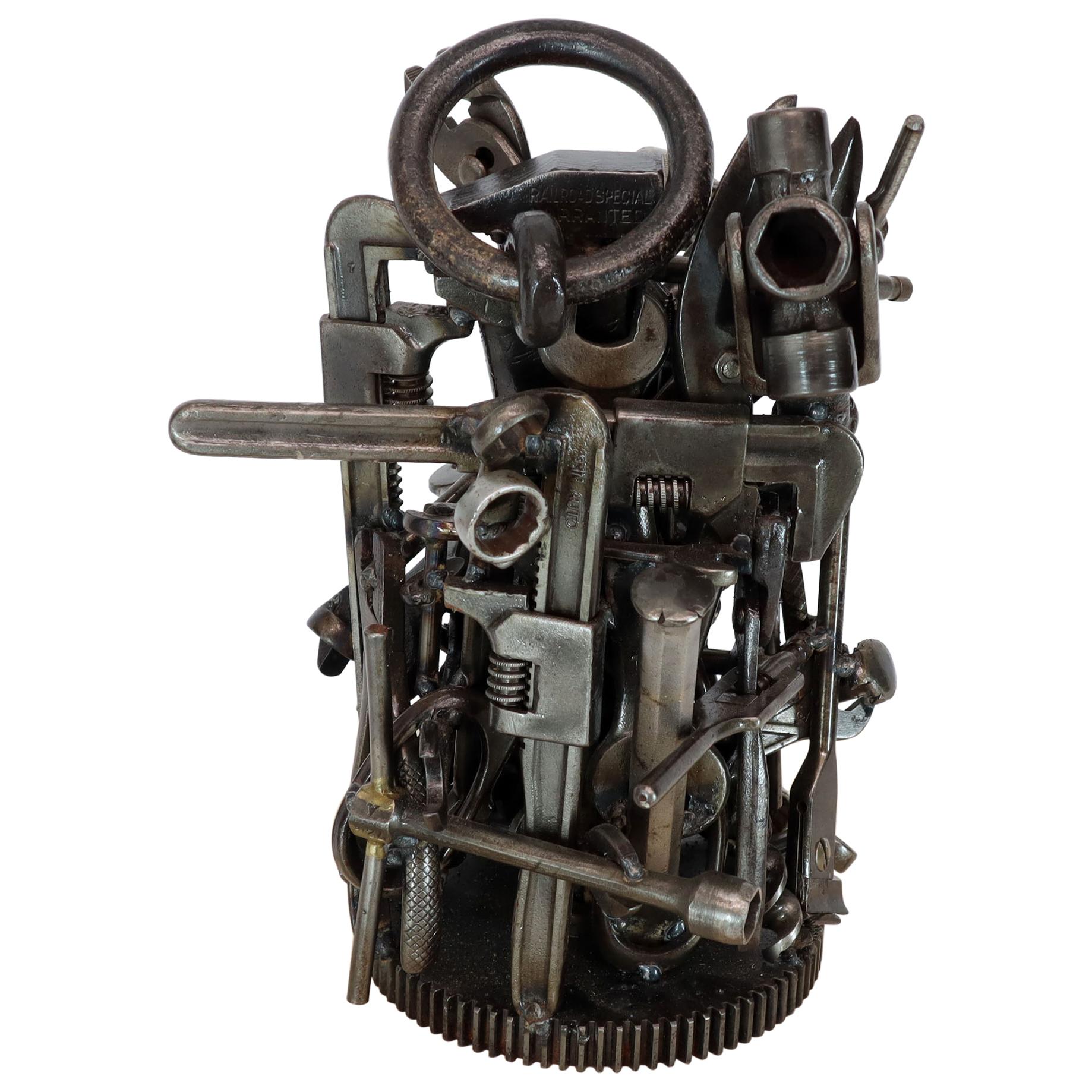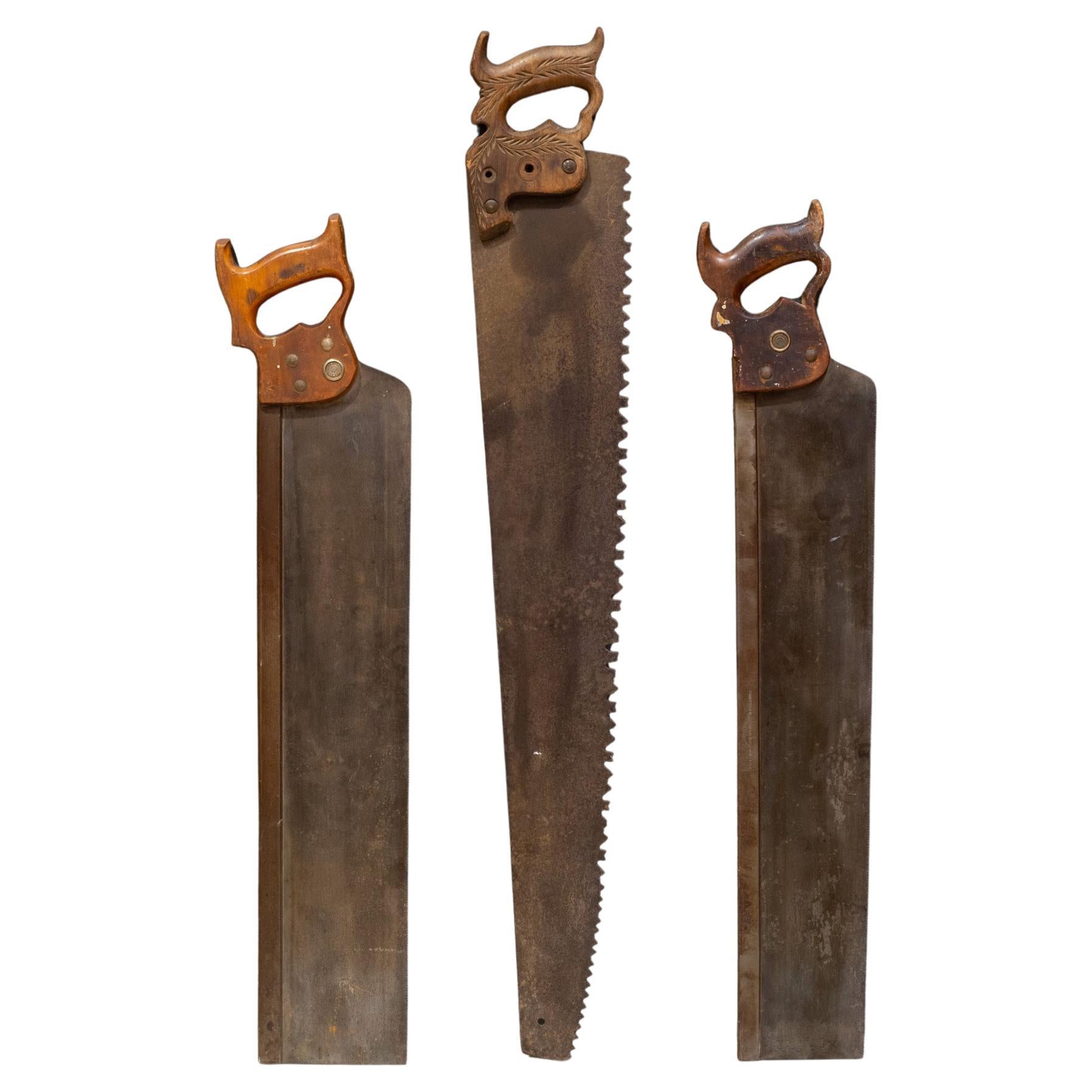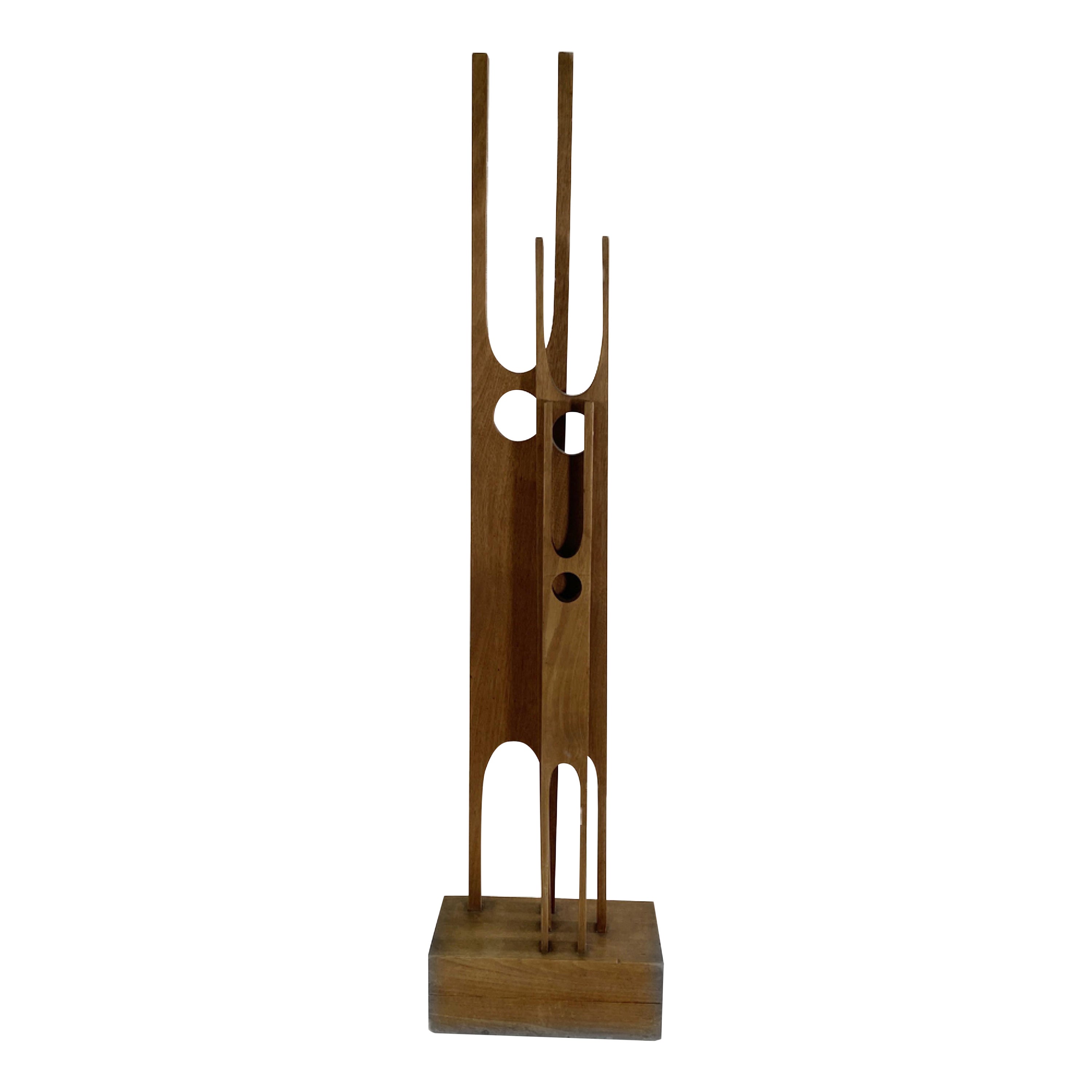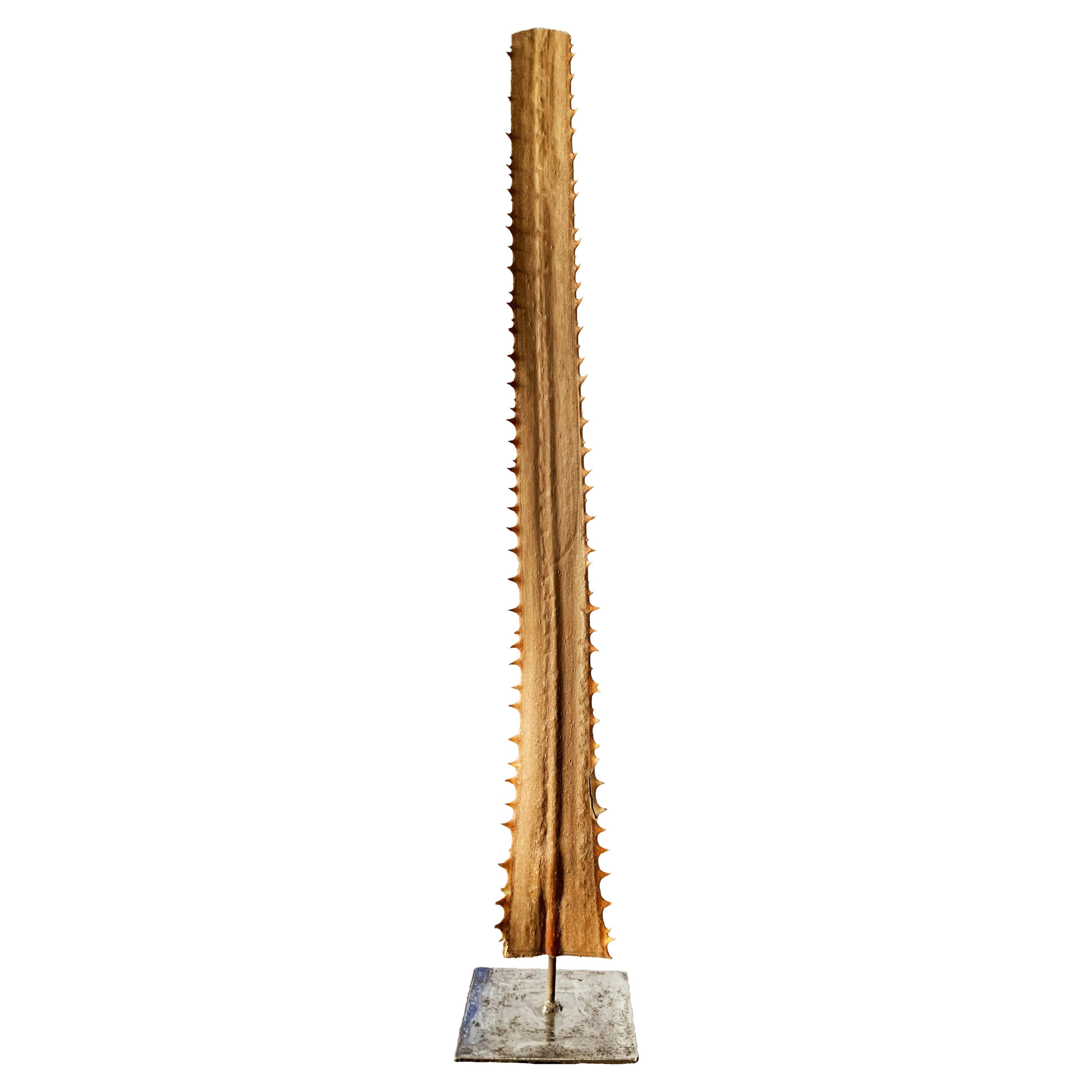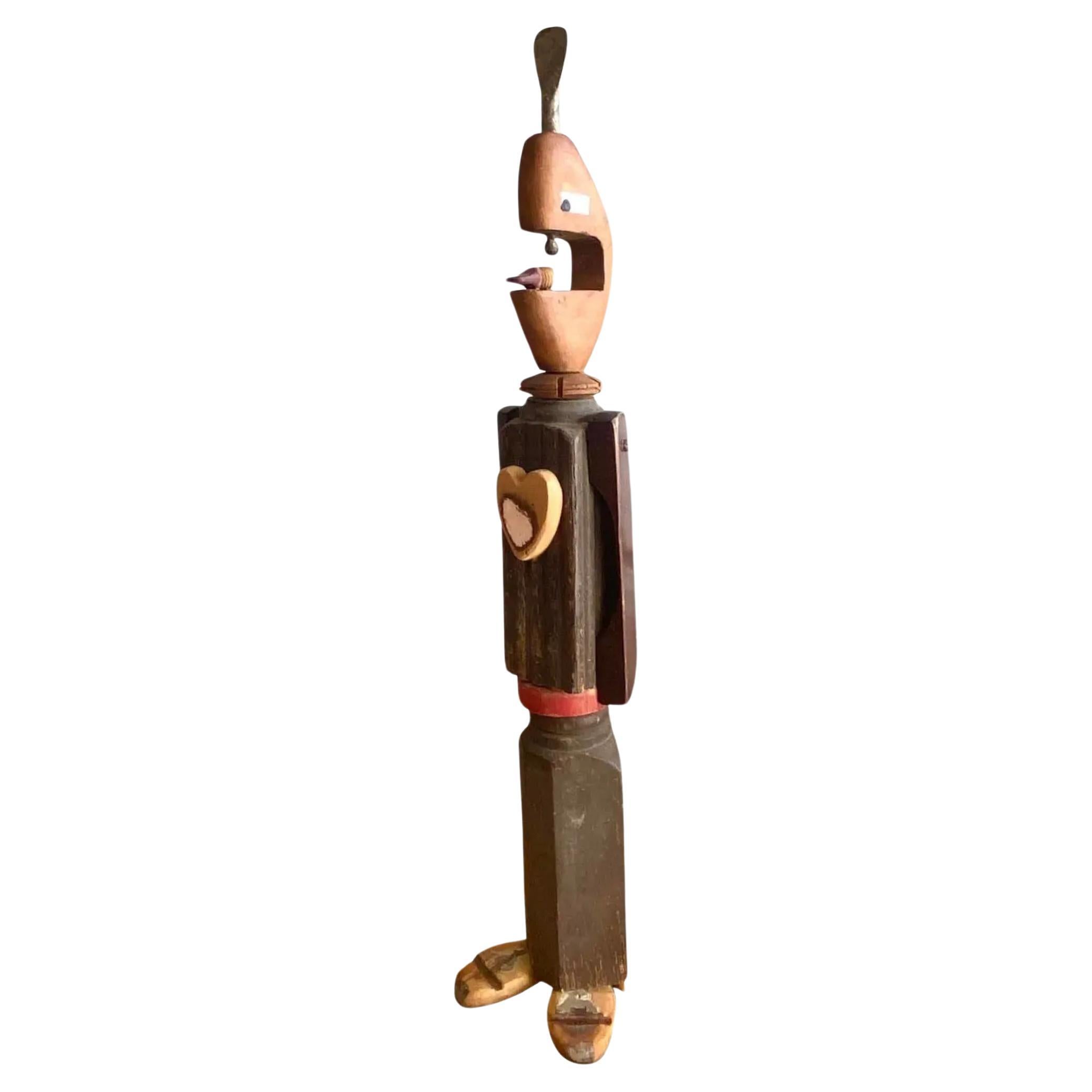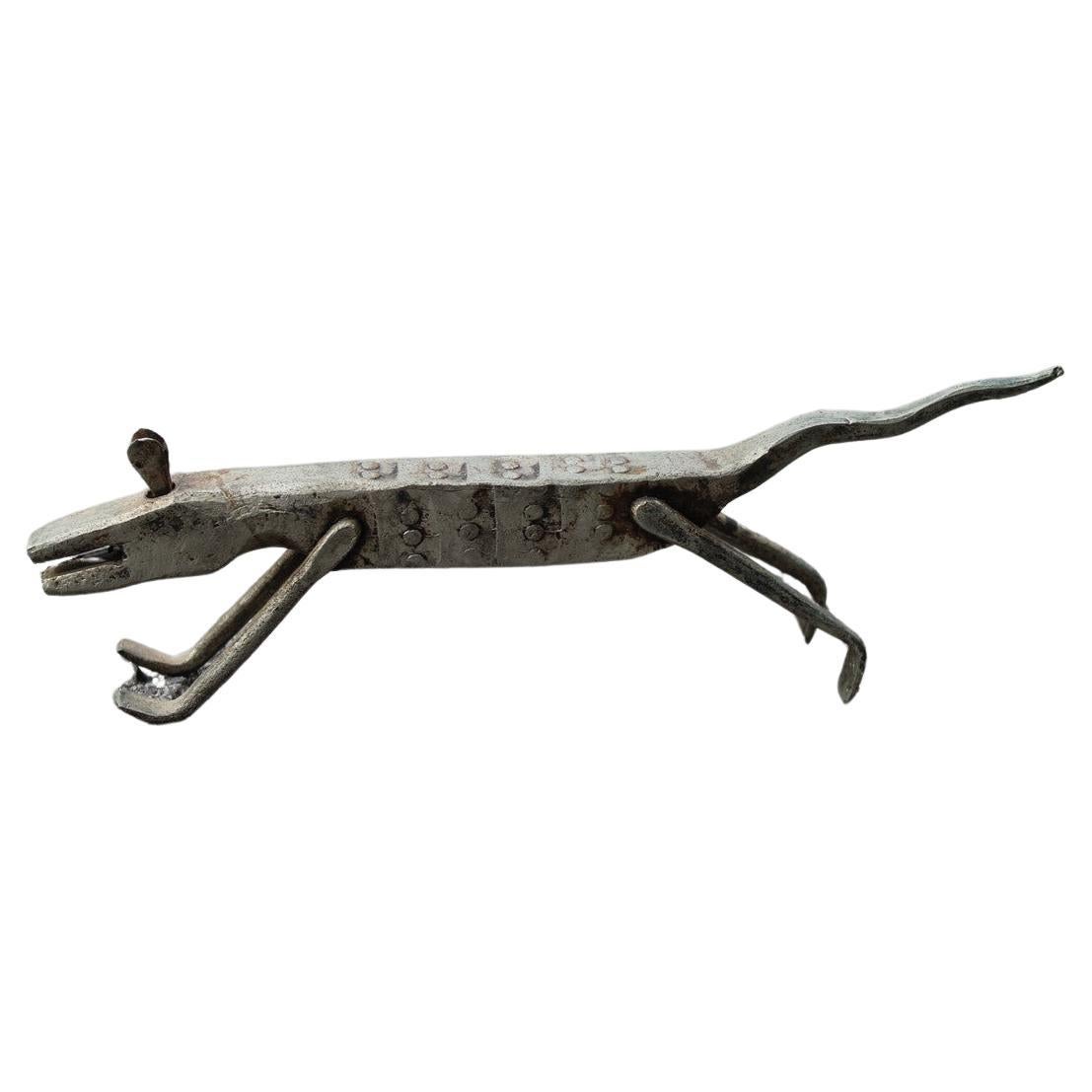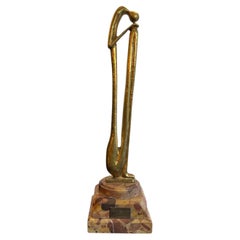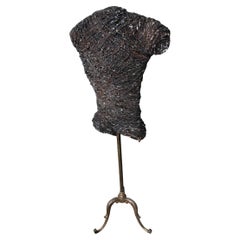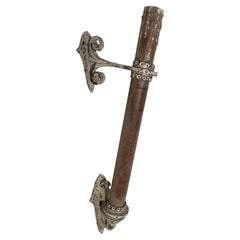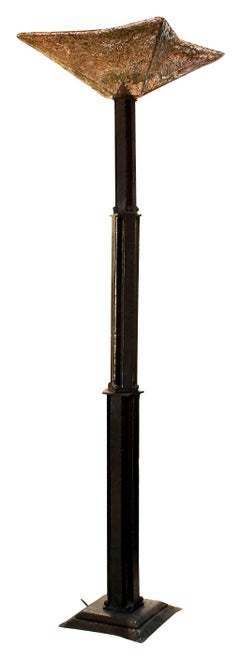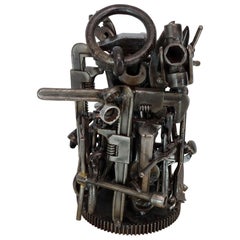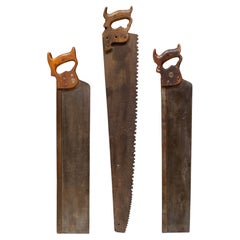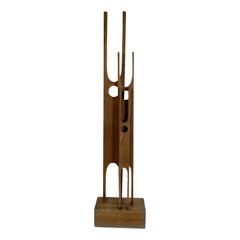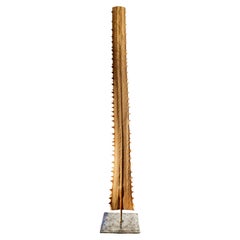Objekte ähnlich wie Oversized Saw with (Don't wait for your opportunity, get up and work hard)
Video wird geladen …
Möchten Sie mehr Bilder oder Videos?
Zusätzliche Bilder oder Videos von dem*der Anbieter*in anfordern
1 von 21
Oversized Saw with (Don't wait for your opportunity, get up and work hard)
10.423,63 €
Versand
Angebot wird abgerufen …Das Versprechen von 1stDibs:
Authentizitätsgarantie,
Geld-Zurück-Garantie,
Stornierung innerhalb von 24 Stunden
Angaben zum Objekt
Oversized Saw Advertising Display Sign
With the phrase in Spanish (Don't wait for your opportunity, get up and work hard) / (No esperes tu oportunidad levantate y trabaja duro).
Why are there so many antiques in Argentina?
In the 1880 – 1940 there was a grate wave of immigration encouraged by the periods of war that were taking place.
1st World War took place between 1914 and 1918
2nd World War took place between 1939 and 1945
The immigrants options were New York or Buenos Aires. Tickets were cheap and in Buenos Aires they were welcomed with open arms, as it was a country where everything was still to be done.
Argentina was the country of new opportunities, labour was needed and religious freedom was assured, in many cases the of the family travel first until they were settled and then the rest of the family members join them.
In the immigrant museum “Ellis Island Immigrant Building” in New York you can se the promotional posters of the boats that would take them to a new life.
Between the years 1895 and 1896, Argentina had the highest DGP (gross domestic product) per capita in the world according to the Maddison Historical Statistics index, this situation arose due to the large amount of food being exported to European countries, which were at war.
The Argentinean ships left the port of Buenos Aires with food, but they returned with furniture, clothes and construction elements, (it´s common to see this the old buildings of the historic neighbourhood of San Telmo, the beams with the inscription “Made in England)”, as well as many markets that were built in Buenos Aires, such us the San Telmo Market, whose structure was brought by ship and afterwards assembled in 900 Defensa Street.
With the great influence of European immigrants living in the country, the children of the upper classes travelled to study in France, resulting in the inauguration of “La Maison Argentinienne”, on 27th of June 1928, in the international city of Paris, which hosted many Argentinians that were studying in Frace.
It´s the fourth house to be built after France, Canada and Belgium, being the first Spanish-speaking one. Still in place today (17 Bd Jourdan, 75014, Paris, France). Many of the children of these wealthy families who attended international art exhibitions, museums and art courses abroad, took a keen interest in the European style. This is why Buenos Aires was at the time referred as “The Paris of South America”.
Between the years 1890 and 1920 more than a hundred Palaces were built on Alvear Avenue the most exclusive avenue in Buenos Aires. Today some of these palaces have been transformed into museums, hotels and embassies.
In the year 1936, the Kavanagh building was inaugurated, it was the tallest reinforced concrete building in South America.
During 1994 the American Society of Civil Engineers distinguished it as an “international engineering milestone”, and it´s now considered a World Heritage of Modern Architecture.
At the time was common to hire foreign architects such as Le Corbusier, who visited Buenos Aires/Argentina in 1929 and in 1948 he drew up the blueprints for a house built in La Plata City (which was declared a World Heritage Site).
In 1947, the Hungarian architect Marcelo Breuer designed “Parador Ariston” in the seaside city of Mar del Plata. After an Argentinean student at Harvard University convinced him to come to Argentina. He worked on an urban development project in the Casa Amarilla, area of La Boca.
The Ukrainian architect, Vladimiro Acosta, arrives in Argentina in 1928 and worked as an architect until que moved to Brazil.
Antonio Bonet, a Spanish architect who worked with Le Corbusier in Paris, arrives in Argentina in 1937, where he carried out several architectural works and in 1938 designs the well-known BFK chair.
Andres Kálnay, of Hungarian origin, made around 120 architectural masterpieces, among which the former Munich brewery stands out, he even made the furniture’s design.
The German architect, Walter Gropius, director of the Bauhaus, lived in Argentina, where he wrote articles for “Sur” magazine and founded in Buenos Aires, an architectural firm with Franz Möller, who was also an architect, where he built two houses.
At the same time several famous designers decided to immigrate to Argentina, among them we can find the well-known French designer, Jean-Michel Frank, who arrived in the country in 1940 and also worked for the Rockefeller family.
Special pieces were made, which were sold exclusively in the country, such as the well-known German company “WMF”, who sold their products by catalogue, which were chosen by the ladies of high society in the list of wedding gifts, as well as the pieces designed by Christofle.
The Swiss sculptor Alberto Giacometti, made special pieces for Argentinean mansions.
In 1904 the first Jansen branch outside Paris was established in Buenos Aires, as the Argentinean clientele demanded a large amount of furniture, from the end of the 19th century to the mid-20th century.
In 1970, the brand Rigolleau Argentina made pieces authorised by Lalique.
The brands Maple and Thompson also set up shop in the country.
The French plastic artist, Marcel Duchamp moved to Argentina in 1918-1919.
Glass signed Gallé, Charder, Leverre, Schneider, Muller and other French firms. They were bought in flower shops and were given to ladies with beautiful floral arrangements.
Some furniture manufacturers travelled to international fairs and bough the patterns to produce the furniture in Argentina, such as the furniture firm Englander and Bonta, who bought the patterns ins Italy.
It is worth mentioning that in Argentina we have the largest community of Italians outside of Italy, as it is estimated that 70 percent of the inhabitants have at least one Italian descendant, followed by Spanish immigrants.
The most Important furniture stores in Argentina:
Comte is founded in 1934 (under the direct management of Jean Michel Frank in 1940).
Nordiska (Swedish company established in 1934).
Churba in 1960, a company that brought foreign designers to present their furniture in the country:
Denmark: (Arne Jacobsen, Finn Juhl, Bender Madsen, Ejner Larsen, Poul Kjaerholm, Hans Wegner)
Sweden: (Hans Agne Jakobsson, Gustavsberg)
United States: (Herman Miller)
Finland: (Lisa Johansson, Folke Arstrom, Tapio Wirkkala, Alvar Aalto, Timo Sarpaneva)
Swedish Factory: (Orrefors)
Italy: (Littala, Vico Magistretti, Emma Gismondi, Gae Aulenti, Angelo Mangiarotti, Elio Martinelli, Gianna Celada, Angelo Mangiarotti, Mario Bellini, Carlo Scarpa)
Finland: (Olivia Toikka)
Plata Lappas (Lappas Silver): a goldsmith shop founded in 1887 in Argentina by Alcibiades Lappas of Greek origin.
In 2019, in Argentina took place “the Art Deco world congress”, in which we participated as hosts invited by Geo Darder, founder of the Copperbridge – Foundation, in which prominent people from all over the world attended to learn about Art Deco in Argentina.
Argentina currently has more than 100 Art Deco buildings and another 90 Art Nouveau buildings throughout the city of Buenos Aires.
Argentina is a country that has not been involved in many wars, which is why it has been a refuge for works of art and antiques from different periods of time, unlike European countries. That is way many collectors, museums and antique dealers from all over the world visit it, you should not miss the opportunity to visit this great country.
Laura Guevara Kjuder, architect.
- Maße:Höhe: 202 cm (79,53 in)Breite: 37 cm (14,57 in)Tiefe: 2,5 cm (0,99 in)
- Stil:Moderne der Mitte des Jahrhunderts (Im Stil von)
- Materialien und Methoden:
- Herkunftsort:
- Zeitalter:
- Herstellungsjahr:1950
- Zustand:Abnutzung dem Alter und der Nutzung entsprechend.
- Anbieterstandort:Ciudad Autónoma Buenos Aires, AR
- Referenznummer:1stDibs: LU6785245431912
Anbieterinformationen
5,0
Geprüfte*r Anbieter*in
Jede*r Anbieter*in erfüllt strenge Standards bezüglich Echtheit und Zuverlässigkeit
Gründungsjahr 1982
1stDibs-Anbieter*in seit 2022
37 Verkäufe auf 1stDibs
Typische Antwortzeit: <1 Stunde
- VersandAngebot wird abgerufen …Versand von: Ciudad Autónoma Buenos Aires, Argentinien
- Rückgabebedingungen
Einige Inhalte dieser Seite wurden automatisch übersetzt. Daher kann 1stDibs nicht die Richtigkeit der Übersetzungen garantieren. Englisch ist die Standardsprache dieser Website.
Authentizitätsgarantie
Im unwahrscheinlichen Fall eines Problems mit der Echtheit eines Objekts kontaktieren Sie uns bitte innerhalb von 1 Jahr für eine volle Rückerstattung. DetailsGeld-Zurück-Garantie
Wenn Ihr Objekt nicht der Beschreibung entspricht, beim Transport beschädigt wurde oder nicht ankommt, kontaktieren Sie uns bitte innerhalb von 7 Tagen für eine vollständige Rückerstattung. DetailsStornierung innerhalb von 24 Stunden
Sie können Ihren Kauf jederzeit innerhalb von 24 Stunden stornieren, ohne jegliche Gründe dafür angeben zu müssen.Geprüfte Anbieter*innen
Unsere Anbieter*innen unterliegen strengen Dienstleistungs- und Qualitätsstandards, wodurch wir die Seriosität unserer Angebote gewährleisten können.Preisgarantie
Wenn Sie feststellen, dass ein*e Anbieter*in dasselbe Objekt anderswo zu einem niedrigeren Preis anbietet, werden wir den Preis entsprechend anpassen.Zuverlässige weltweite Lieferung
Unsere erstklassigen Versandunternehmen bieten spezielle Versandoptionen weltweit, einschließlich individueller Lieferung.Mehr von diesem*dieser Anbieter*in
Alle anzeigenEntwurf: Carlos de Lamota, Materiale: Bronze und Marmor, Stil: Art déco
Design: Carlos de Lamota
Er wurde am 13. August 1924 in der Provinz San Juan, Argentinien, geboren. Seine Leidenschaft für die Kunst begann schon in sehr jungen Jahren. Mit 11 Jahren...
Kategorie
Vintage, 1970er, Argentinisch, Moderne der Mitte des Jahrhunderts, Tiers...
Materialien
Marmor, Bronze
Torso-Skulptur eines Mannes
Bildhauerei
Jahr: 1970
MATERIAL:Metall und Bronze
Seit 1982 haben wir uns auf den Verkauf von Art Deco, Jugendstil und Vintage spezialisiert. Wenn Sie Fragen haben, stehen wir Ihn...
Kategorie
Vintage, 1970er, Unbekannt, Moderne der Mitte des Jahrhunderts, Büsten
Materialien
Bronze, Metall
24.321 € / Objekt
Wandleuchter im Art déco-Stil, 1930, Gilbert Poillerat zugeschrieben, Frankreich
Von Gilbert Poillerat
Stil: Art Deco
MATERIAL: Eisen und Holz
Land: Frankreich
Seit 1982 haben wir uns auf den Verkauf von Art Deco, Jugendstil und Vintage spezialisiert. Wenn Sie Fragen haben, stehen wir...
Kategorie
Vintage, 1930er, Französisch, Art déco, Wandleuchten
Materialien
Eisen
Stehlampe, Art déco, 1940, Italien, Materialien: Eisen und Murano
Stehlampen
MATERIAL: Eisen und Murano
Frankreich
1930
Sie wollen in den goldenen Jahren leben, das sind die Stehlampen, die Ihr Projekt braucht.
Seit 1982 haben wir uns auf den Verk...
Kategorie
Vintage, 1930er, Italienisch, Art déco, Stehlampen
Materialien
Eisen
Skulptur , 1920, Art déco, signiert Lorenzl
Zeichen:
Lorenz Josef
(Österreich, 1892-1950). Bildhauer, bekannt für seine Tänzerinnen. Arbeitete zusammen mit Goldscheider in Wien.
MATERIALIEN: Bronxe und Onyx mit der ursprüngli...
Kategorie
Vintage, 1920er, Österreichisch, Art déco, Figurative Skulpturen
Materialien
Onyx, Bronze
Säulensäule, Art déco, 1920, Französisch
Säule
Jahr: 1920
Land: Französisch
Jugendstil, Art Deco
Seit 1982 haben wir uns auf den Verkauf von Art Deco, Jugendstil und Vintage spezialisiert. Wenn Sie Fragen haben, stehen wir...
Kategorie
Vintage, 1920er, Französisch, Art déco, Sockel und Säulen
Materialien
Holz
12.160 € / Set
Das könnte Ihnen auch gefallen
Moderne moderne komplexe Werkzeuge Gruppenskulptur geschweißte Werkzeuge
Von Feliciano Béjar
Moderne Skulptur aus echten und alten zusammengeschweißten Werkzeugen. Im Stil von Feliciano Bejar.
Kategorie
20. Jahrhundert, amerikanisch, Moderne der Mitte des Jahrhunderts, Mobil...
Disston and Sons Messing-Rückenmesser ca. 1940er Jahre Preis pro Stück
ÜBER
Preis pro Stück.
Vintage-Sägen mit handgeschnitzten Holzgriffen, Messingetiketten, Messingschrauben und Stahlblättern. Zwei haben eine Messingrückseite.
SCHÖPFER Dissto...
Kategorie
Frühes 20. Jahrhundert, Industriell, Sportausrüstung und -andenken
Materialien
Stahl
104 € Angebotspreis / Objekt
20 % Rabatt
Moderne handgeschnitzte Holzskulptur
Moderne handgeschnitzte Holzskulptur
Kategorie
20. Jahrhundert, Unbekannt, Moderne, Abstrakte Skulpturen
Materialien
Holz
Vegetarischer Sägefisch
Der Schwertfisch war ein sehr interessantes Dekorationssymbol in den bedeutendsten Häusern und Orten Mexikos. Auch dieses wunderbare Stück ist seit der Zeit der Azteken ein sehr wich...
Kategorie
2010er, Naturexemplare
Materialien
Palmenholz
434 € / Set
Contemporary Found Object Sculpture Signed Lisa Lulo
Fabelhafte Fundstück-Skulptur eines Mannes. Signiert von der Künstlerin Lisa Iulo. Eine brillante Zusammenstellung von Einzelteilen, um diese markante Figur zu schaffen. Erworben aus...
Kategorie
Ende des 20. Jahrhunderts, amerikanisch, American Arts and Crafts, Figur...
Materialien
Keramik
Metallskulptur eines Hundes Italien 1960 Brutalist
Metallskulptur eines Hundes Italien 1960 Brutalist
Kategorie
Vintage, 1960s, Italian, Moderne der Mitte des Jahrhunderts, Tierskulpturen
Materialien
Metall
